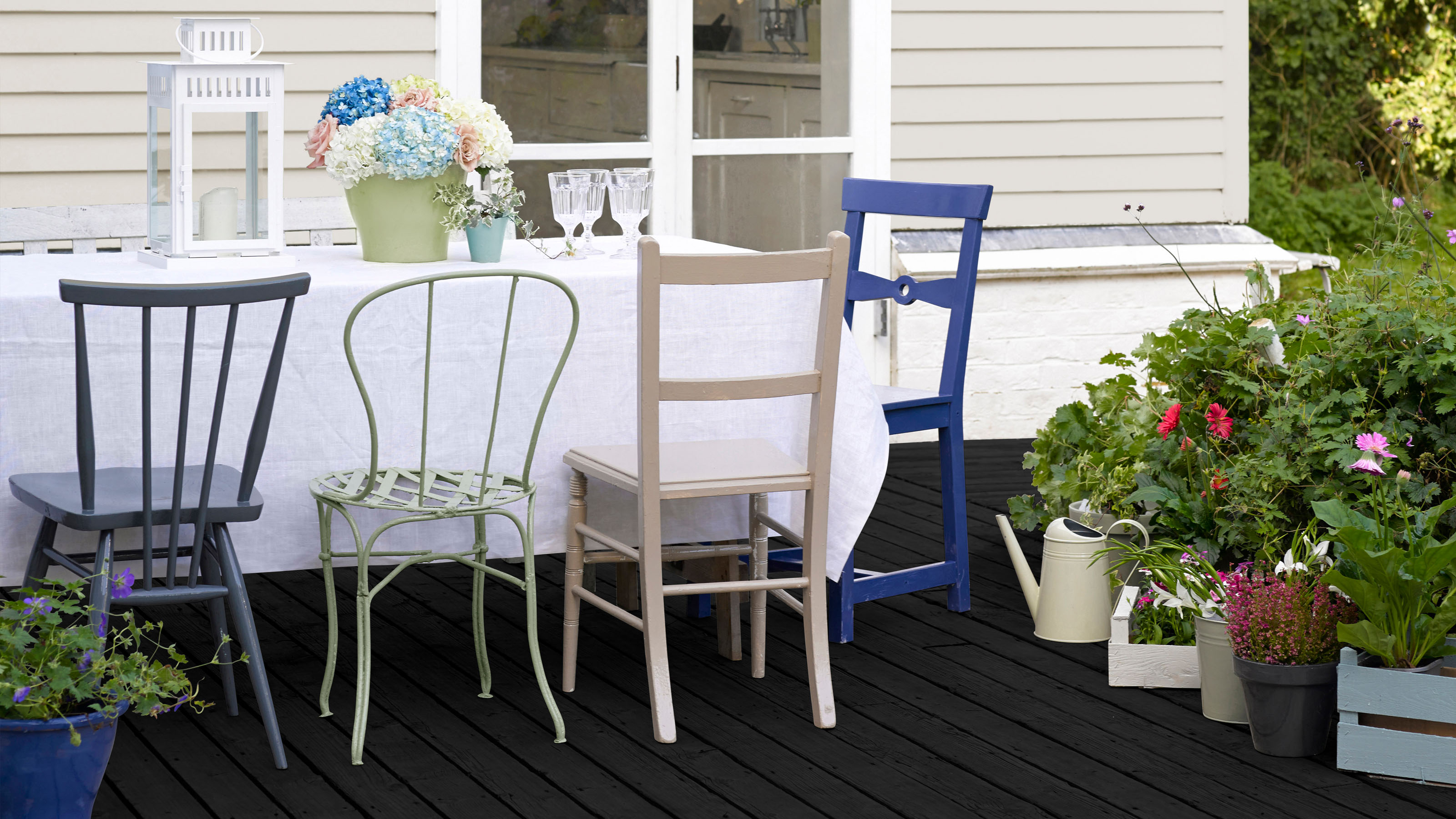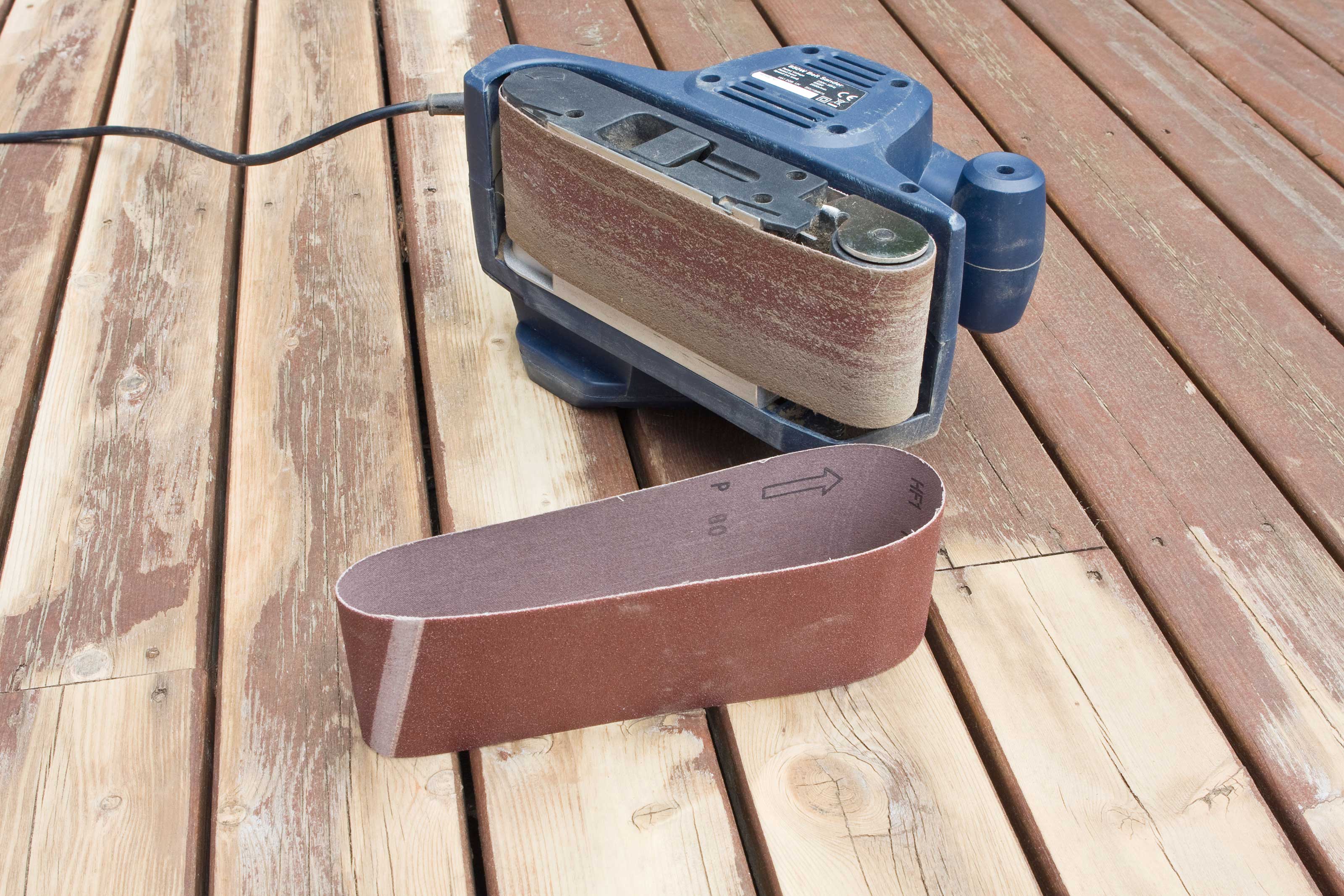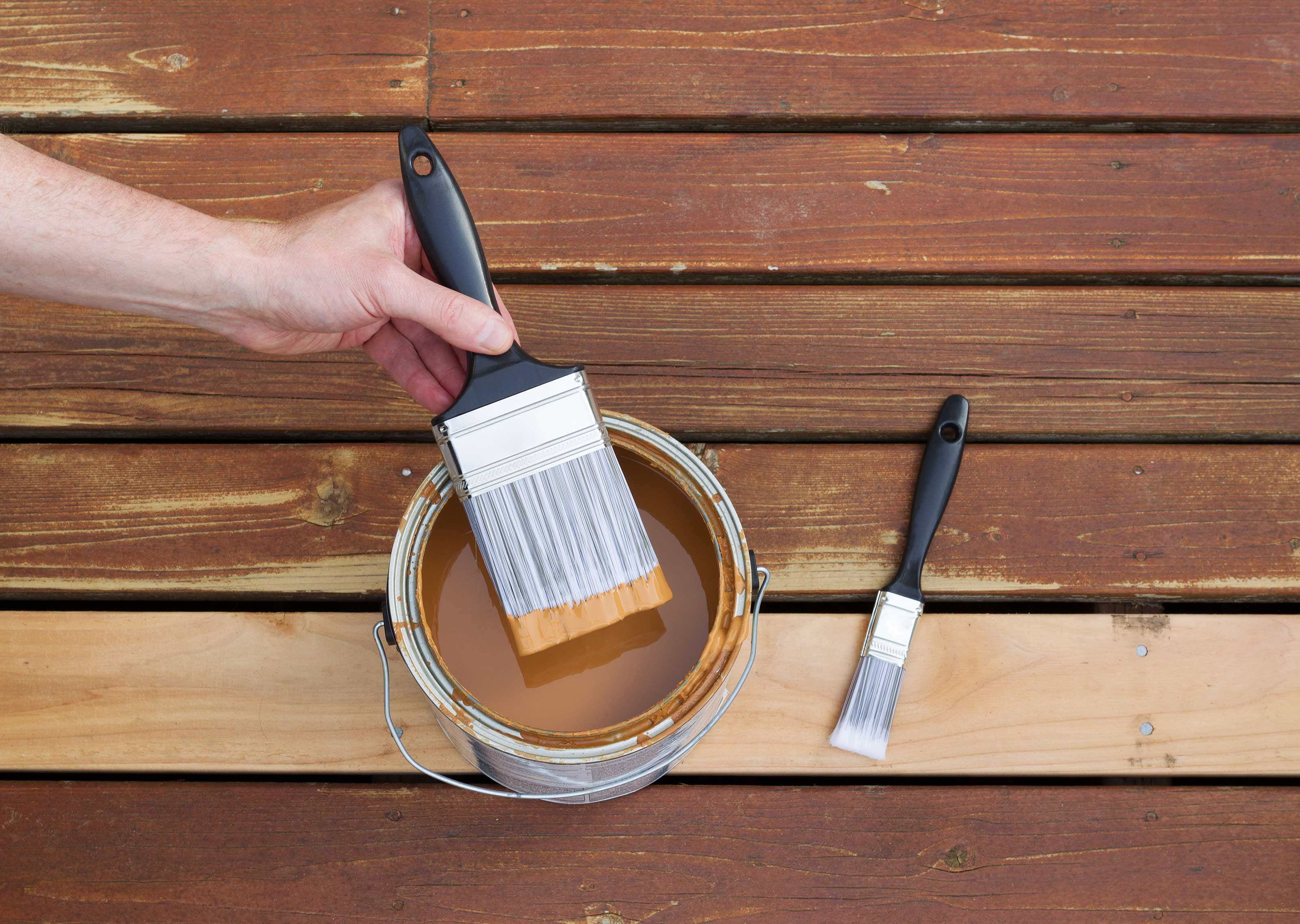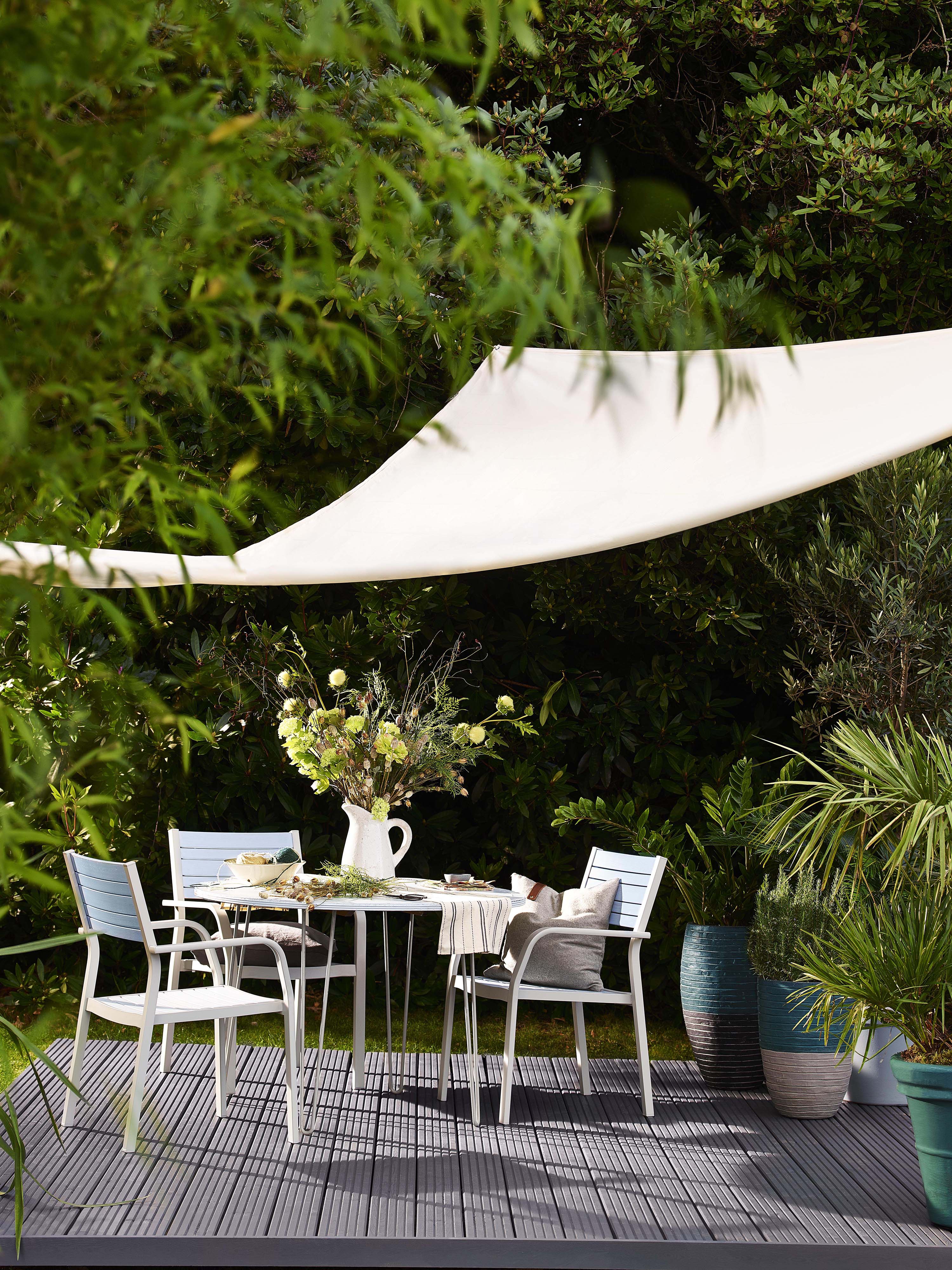How to paint decking: seal and protect your deck from the elements
Need to know how to paint decking? Give yours a fresh new look with our step-by-step advice


If you're wondering how to paint decking, then we're here to help. Whether you want to give it a whole new look with an eye-catching color or just want to smarten-up your existing style, knowing how to do it correctly will ensure that you get the results you're after.
What's more, painting, staining, or oiling your decking ideas will seal them from rain and wear-and-tear, helping them last longer. You can now find lots of decking products that 'are specifically formulated to protect the surface from unwanted excess moisture and UV damage whilst retaining an even color,' says Matthew Brown, Technical Consultant from Sadolin. 'Even when buying brand new decking, it's important you treat it properly to ensure longevity.'
Whether it's a midnight navy shade, a rich mahogany, a clear treatment or something in-between, we've got all the tips you need to learn how to paint decking. All it takes is six simple steps.
How to paint decking: 6 steps to a perfect finish
1. Prepare the deck

When painting (or repainting) your deck, you need to start with a blank canvas. So, begin by removing all planters and garden furniture ideas and putting them safely aside. Then, sweep up any fallen leaves or other detritus with a broom.
2. Sand away old stain or paint

If you have smooth (rather than grooved) decking that has been previously varnished, stained, or painted, you'll need to strip it back to bare wood, the Cuprinol team says. If you don't do this before you repaint it, the new coat won't adhere properly and will start flaking before too long, adds Matthew Brown, Technical Consultant of Sadolin.
A palm or belt sander will do the job. Remember to sand in the direction of the wood and wear a protective face mask.
It's much trickier to sand down grooved decking. Instead, you may wish to use a decking stripper. These are powerful solutions so ensure you read the application instructions carefully.
3. Clean the deck

Next, you need to 'remove any algae, lichen, fungi or moss using an appropriate fungicidal wash,' says the experts at Cuprinol. Our guide on how to clean decking has straightforward step-by-step advice.
Once you've cleaned your deck, allow it to dry properly – for at least 24 hours in dry conditions. Painting over damp wood can trap the moisture, leading to rot and algae build-up.
4. Get painting

Once your deck is clean and dry, it's time for the fun part. Grab your chosen decking paint (or stain), and give it a good stir. Then, begin to paint, starting from the corner of your decking and working backwards towards an exit (this ensures you don't accidentally paint yourself in!).
You can use a brush, which is useful for getting into nooks and crannies, but a roller or even a paint sprayer will get the job done faster. It's recommended to cover up any nearby surfaces, such as covered deck ideas, garden wall ideas or patio ideas, with dust sheets. This is especially the case with sprayers and rollers, as they are more prone to paint splashes.
Work on three to four boards at a time, painting down the lengths from top to bottom. Avoid overloading your brush or roller, or allowing the paint to pool. If you're using a sprayer, the experts at B&Q suggest to hold it by angling the pick-up tube in the pot to the bottom of the container. This will minimize the number of refills needed. For a consistent finish, keep your arm at the same distance from the decking as you work (around 20 to 25cm).
5. Leave to dry

Time to pop the kettle on and take a breather. Your freshly-painted deck will usually take around two hours to dry to the touch, but you'll need to leave it a little longer before you actually walk on it – around six hours or so.
Of course, this partly depends on the temperature and the type of product you're using – check the label for guidance.
- Why not refresh yourself with a botanical brew? Learn how to grow your own herbal tea with our guide.
6. Apply extra coats

'For better, longer-lasting results use two to three coats on your deck,' suggests the team at Cuprinol. Simply follow the steps above, allowing it to throughly dry in-between layers.
What's the difference between decking oil, decking stain and decking paint?

So, now you know how to paint decking, but knowing exactly what you want to paint it with is another story. You have three choices: paint, oil, or stain.
'Decking oils penetrate into the wood to nourish and replace the natural oils lost through weathering,' explains Cuprinol. 'They're ideal for new or newly restored decks as they enhance the natural color and beauty of the wood.'
However, if you're after a richer color, then a stain makes a good alternative. They can be used on new or weathered decks, and offer a more opaque finish.
If you're looking for a seriously striking look and are not too bothered about showing the timber's natural patina off, then decking paint might be the way forward. Available in a wide spectrum of colors, its thicker coating is great for hiding imperfections and is long-lasting.
For a DIY hack, you can try mixing silica sand into the paint for extra grip – our guide on slippery deck solutions has more advice.

The garden was always a big part of Holly's life growing up, as was the surrounding New Forest where she lived. Her appreciation for the great outdoors has only grown since then. She's been an allotment keeper, a professional gardener, and a botanical illustrator – plants are her passion.
